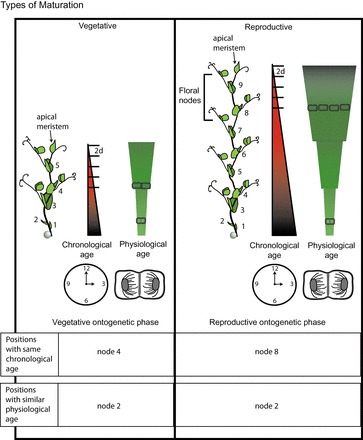Fig. 1.

Maturation status of a plant can be described in terms of ontogenetic phase, and physiological and chronological ages. Plant on the left is in the vegetative ontogenetic phase, whereas the one on the right is reproductive with the upper nodes containing floral meristems. Numbers mark the nodes from base to apical meristem. Nodes of the same number have the same physiological age (related to cell divisions in the apical meristem at the time the tissue was laid down) in both plants whereas the chronological age (related to the passage of time since the tissue was laid down) continues to increase with time meaning node 3 on the older plant is chronologically older than node 3 on the younger plant. In addition physiological age (depicted as a more jagged progression, rather than the linear progression of chronological age) can change depending on environmental conditions and on stress responses in the plant and so is not interchangeable with inverse chronological age. In conditions described here, it takes approximately 2 d for a new leaf to emerge which marked on the chronological scale. (This figure is available in colour at JXB online.)
